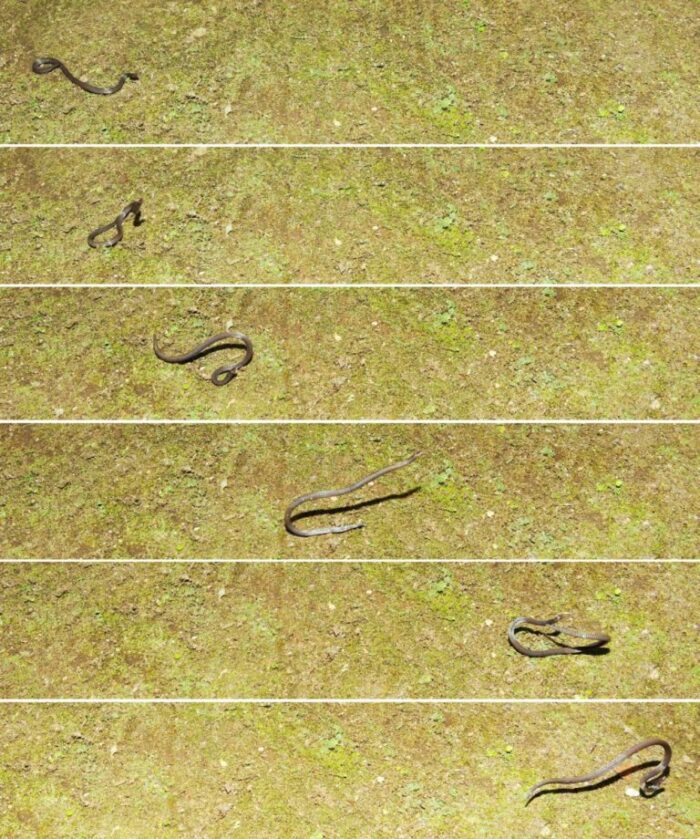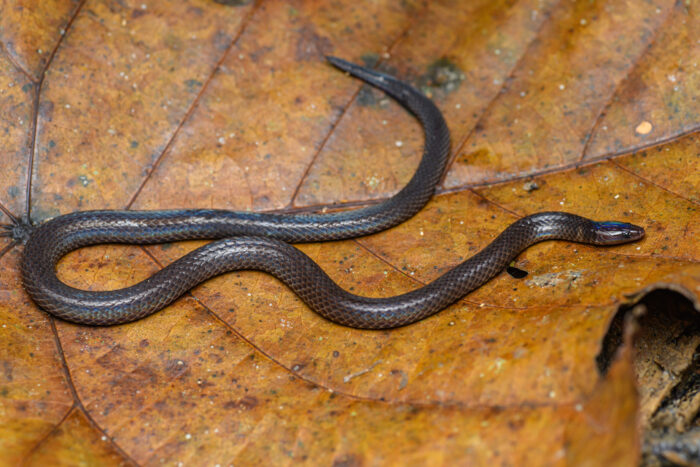Snakes move differently than any other land animal.
Hey, when you don't have any limbs, you've got to find your own way to get around, right? A snake's slither is a little like swimming across the ground. (No wonder some of these reptiles are literally sea snakes that live along ocean coastlines!)
But even among snakes, there are some species that put their own unique twist on locomotion. Take the sidewinder, a desert snake whose twisty motion keeps as much of its body off the hot ground as possible, as well as giving it excellent grip on the shifting sands.
Just look at the unique tracks it leaves behind!

Tracks in the sand made by a sidewinder. (Wikimedia Commons)
But even that movement has nothing on the dwarf reed snake. New research has shown that when this tiny snake is threatened, it speeds away in a flash ... by doing cartwheels!
Spin cycle
Also known as Pseudorabdion longiceps, the dwarf reed snake lives in southeast Asia. It only measures around 23 centimetres (9 inches) and is not known for being a dominant predator. Instead, much of its lifestyle is based around staying hidden from enemies.
It lives in the rainforest, where its brown colouring helps it stay camouflaged on the forest floor. To stay even more secret, it will hide motionless under rocks, logs, and leaves. But should it be discovered, it does have one more trick up its sleeve (even if snakes don't have really sleeves).
Those magnificent cartwheels!
Look what we found!

Over, under, and around! This series of photos shows a dwarf reed snake on a roll. (Evan Quah)
The discovery first happened in 2019, when researchers from the University Malaysia Sabah stumbled across one of these secretive snakes in the wild. They could barely believe their eyes when they saw the creature roll and tumble away with its body in a sort of oval hoop shape! Here is the researchers' description of the event.
"The snake cartwheeled approximately 1.5 metres in less than 5 seconds, down the road," they wrote. "By cartwheeling down an incline [hill], the snake was able to gain speed and rapidly cover more ground."
The researchers then captured the snake and place it on flat ground, where they watched it repeat its movement. They took photos of it, which are shown above.
That's pretty remarkable stuff! Though more research is needed, scientists believe that this method of movement serves at least two purposes: it is quick, and it is also erratic (surprising), which would likely confuse predators.
Roll on, you amazing snake!
 Little is known about the dwarf reed snake, but its way of escaping danger is making researchers sit up and take notice. (Wikimedia Commons)
Little is known about the dwarf reed snake, but its way of escaping danger is making researchers sit up and take notice. (Wikimedia Commons)









